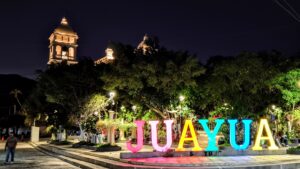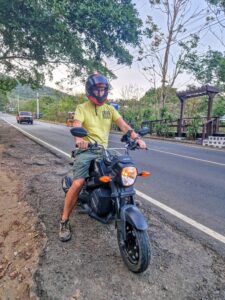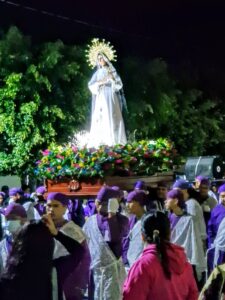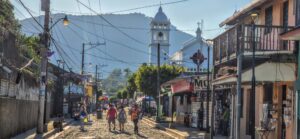The Ruta de Flores is a chain of pretty towns in El Salvador not too far from Santa Ana. Each town has it’s own character and must see activities and people spend anything from a few days to a few weeks exploring what the area has to offer. We had opted to base ourselves in Juayua in the middle of the route.
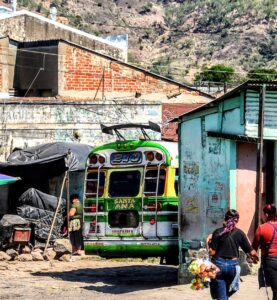
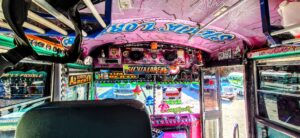
We caught a taxi from our hostel in Santa Ana to the bus station, to board an old American school bus that would take us on two hour journey to Juayua. We got to see even more brightly and eclectically decorated buses here, and managed to perfect our pronunciation of the destination town sufficiently to find the right bus on first ask of one of the friendly locals. The bus ride went quickly as it wasn’t nearly as busy as we experienced in Nicaragua, and before too long we were checking into Hostel Doña Mercedes in Juayua which was small and family owned. We decided to walk around the town which was small, pretty and very quiet. At the weekends there is a locally famous food market and it comes to life but in the week it was just a pretty rural town. We found a proper pizzeria in the evening where we had probably the best pizza we’ve eaten on this trip. I did mention this when we paid to the man who I presume is the owner and he seemed quite unmoved, I think he understood me, maybe he’s just accustomed to hearing this night after night from the string of tourists who kept all five tables filled the whole time we were there.
Unfortunately that night Alex was sick, we’d shared everything at dinner so it wasn’t the food, we later found out Kasper was sick at the same time so it might have been the food from our last night in Santa Ana or maybe just a bug that we’d passed around.
As a result of Alex feeling ill we had a slow morning and it wasn’t until early afternoon that we made it out. We’d decided to hire a motorbike for the afternoon to explore the two towns to the south of us on the Ruta de Flores.
Alex probably didn’t explain last time, but when we rented a motorbike on Ometepe I really hadn’t driven one much before. A few hours on the island with almost no traffic was great lesson because this time we’d be on real roads with real traffic. We set off and got a good feel for the roads before stopping at a view point on the side of the road. A police car pulled up behind us, but we soon realised this was just two police officers on a break, and they were happy to answer our questions about what the incredibly loud bug was hiding somewhere in the tree and causing us all to have to practically shout to be heard!
At the next viewpoint we were stopped by a nice couple in car looking for directions to a nearby attraction. They immediately talked to us in Spanish, there are not that many non-Spanish speaking tourists here, we had several times where locals just assumed we were Salvadorans visiting from the capital. It was nice to be able to understand, and give them directions without having to break into English!
Our first proper stop was the El Carmen Estate, a coffee plantation that we’d first been recommended by the German couple who we met on the boat while leaving Ometepe. We’ve done a coffee tour previously in Colombia which was more focused on the growing of the beans, however El Carmen works with local farms and is more focused on the processing which was really interesting to see.
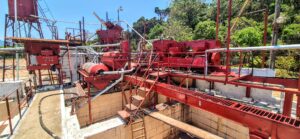
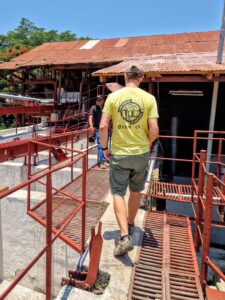
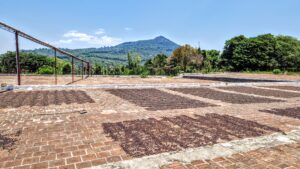
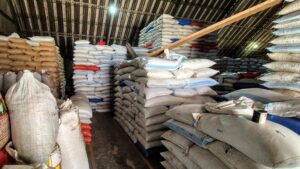

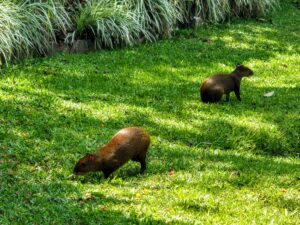
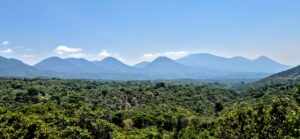
After the tour we drove the bike into the centre of town and went for a walk. The town of Ataco is a pretty town on the northern end of the Ruta de Flores famed for it’s colourful murals. After a wander around the centre we walked up towards the mirador. On the way up a couple of guys brandishing machetes greeted us and gave us specific directions for how to get up there. They then proceeded to follow us at a distance as we walked up. I would have been pretty concerned that we were about to get mugged except that they were accompanied by a child. Once we reached the top we had a fantastic view across the town and the men, once they joined us, were simply friendly and offered to take our photo.
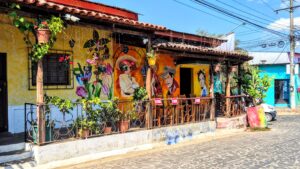
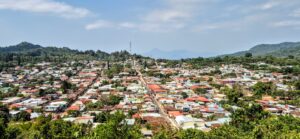
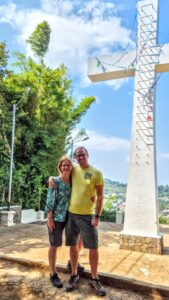
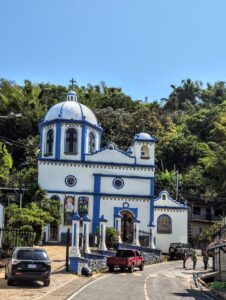
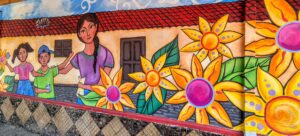
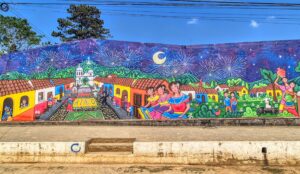
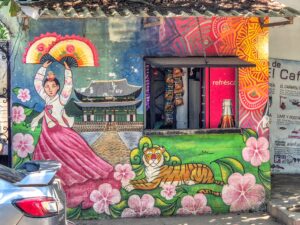

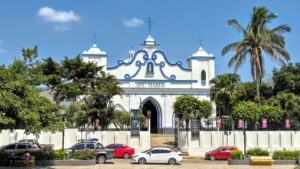
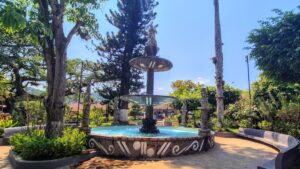
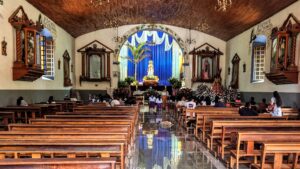
After our walk we headed back to the bike to drive down to Apeneco. On the way we stopped at Cafe Albania, famed for it’s maze and a bunch of odd activities including cycling on a zip wire, surfing on a zip wire, and a rainbow slide that is a TikTok favourite (apparently). We explored the maze which was surprisingly difficult, being sited on a slope and involving a lot of up and down and wrong turns before we found the centre, we grabbed a bite to eat at the cafe, which featured the slowest and least friendly service we’ve experienced on our entire trip, and then continued on across the road to Apaneco.
Apaneco was another small and pretty town where they’d pedestrianised some of the streets, turning them into gardens that you could walk through, and after a stroll around the centre we got back on the bike to head back to Juayua.
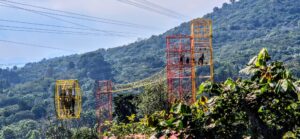

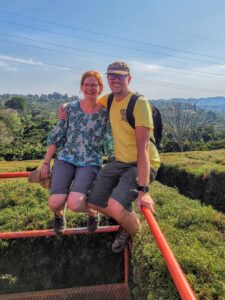
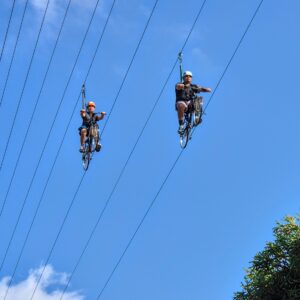

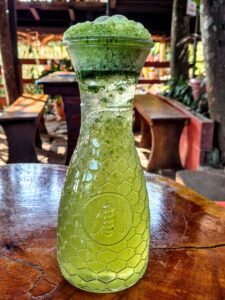
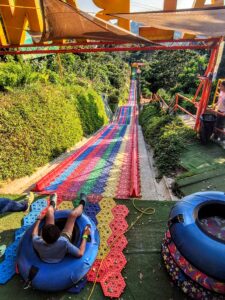


Feeling like something different for dinner we went to the local Chinese restaurant which served a couple of tofu dishes. When asked I told them to make it spicy and for once they listened delivering the only really spicy food we’ve had in Central America. On leaving the Chinese we got caught in a parade of people walking around town carrying a float with a statue of the Virgin Mary. A brass band was playing a sad tune as they walked through the town and in the dark it made for quite an eerie experience. After following along for a few blocks we peeled away towards our hostel.
The next day we decided to hire the motorbike again and explore the southernmost towns of the Ruta de Flores. We started off by driving down to Nahuizalco via a couple of viewpoints. The town was having a market so we wandered around admiring the fresh produce. In the central square we found a stall making juices so we stopped, took the owner’s recommendation on which juice to buy, and chatted to the owner and her husband. Nahuizalco is the most indigenous of all of the towns on the Ruta de Flores and we’d seen advertised blog post by another traveller reporting culture shock when visiting but we just found another lovely town, with a market and friendly people dressed traditionally, even if we stick out somewhat by being twice the height (in some cases that’s not even an exaggeration) of everyone around us.
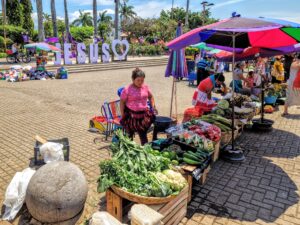
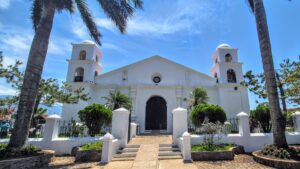
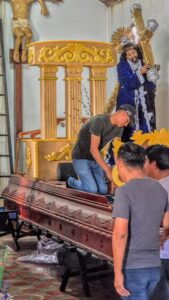
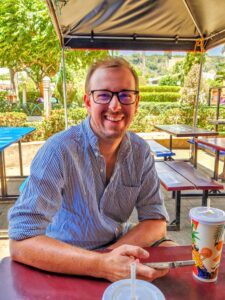
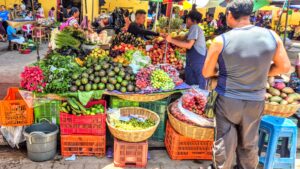
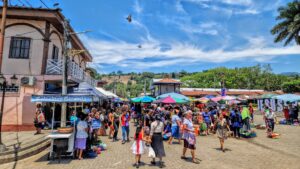
After a good exploration of the town we got back on the bike to head to the tiny town of Salcoatitan. We were pretty hungry by the time we got there so we found a bakery and tried the quesadilla, which in El Salvador is a kind of sweet cheese cake made with rice flour, a local speciality. After this we had a walk through the central square and found a small museum dedicated to the history of printing, featuring everything from Guatemala’s first printing press all the way through to an Apple Mac from the mid 2000s!
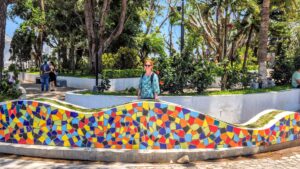
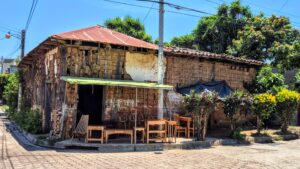
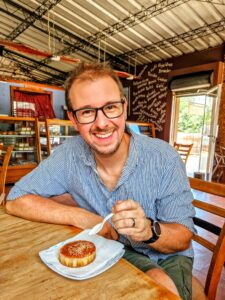
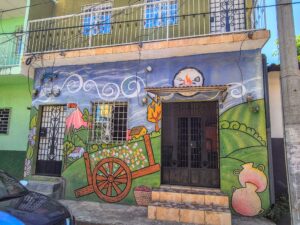
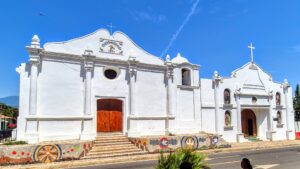

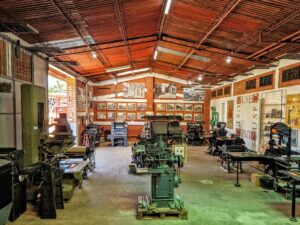
After this interesting diversion, it was mid-afternoon and we drove back to Juayua to top the bike up with fuel and return it to the hostel. When we stopped at the petrol station a sort of open-top party bus came past, blasting out music and with locals hanging over the sides singing and waving to us. It turned out the weekend food market was already in full swing.
Our hostel was full this night so we had to move to another one, it turned out to be around the corner so it wasn’t far to drag the bags before we headed out to find out more about the food market. This is the weekly food festival in Juayua which brings both locals and tourists in to the town. Unlike a farmers market in the UK the market stalls seemed to be mostly divided into two types: food stalls that sold traditional “meat and two veg” plates; or Michelada stands. We started at one of the Michelada stands which had a wide variety of different flavours of the spicy, beer-based cocktail, served in huge plastic cups with crazy-coloured snacks precariously balanced on-top. We sat in the central square, enjoying our drinks and the hectic bustle of this usually quiet town, brought into chaotic life for a few hours. There was music, and people milling around all over. We even saw a man with a large snake draped around his neck walking around and posing for photos with people.
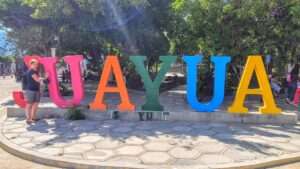
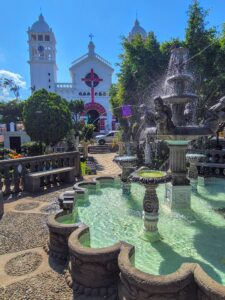
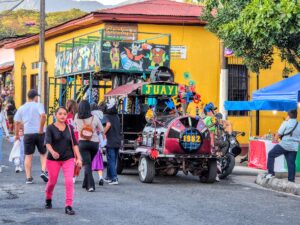
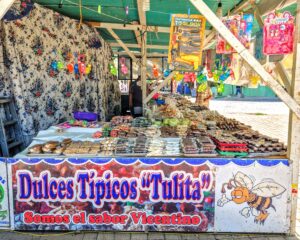
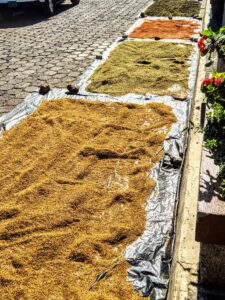
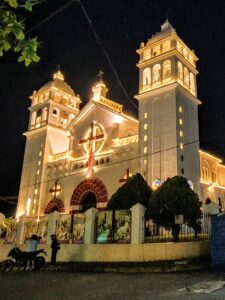
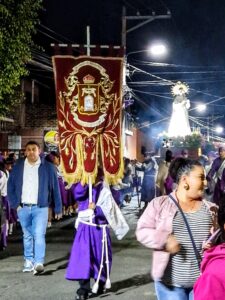
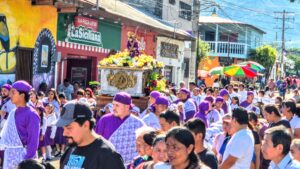

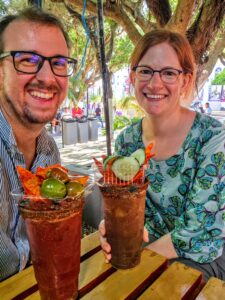
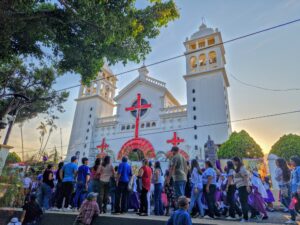
Our hostel for this night was really nice, decorated to a very high standard it was more of a self-catered boutique hotel, with a few rooms around a peaceful shady courtyard. It was a shame to only be staying the one night. Having not found any substantional vegetarian food on the market, other than some interesting Bao buns and a huge array of brightly coloured sugary sweets, we went to the supermarket and bought something simple to cook at the hostel.
We had an early night as we were due to be picked up at 5 the next morning, heading off to our next country, Guatemala. We watched a few re-runs of Friends in Spanish on the TV in our room (the first time we’d watched TV since starting the trip) and packed up everything ready to go first thing.
We’d had an amazing time in El Salvador. We ended up spending just over a week in the country, and wished we had been able to spend a bit longer as there was definitely more to explore. The people were the most open and friendly we had met on the trip, and we’d enjoyed the local food and drink specialities. It was a really interesting country, still turbulent and still finding it’s feet, but very safe to travel around whilst we were there. Although the landscapes and tourist highlights are not as exciting or beautiful as some of the other places we visited, we felt so welcome and really enjoyed exploring. We’re glad we took the chance and travelled through El Salvador, a real highlight of the trip.


